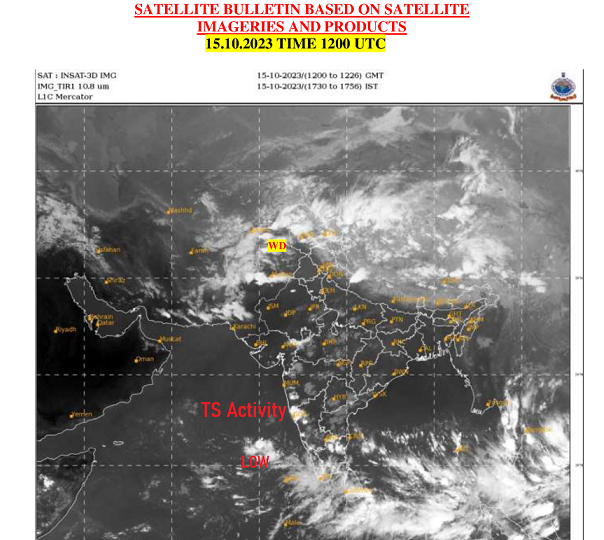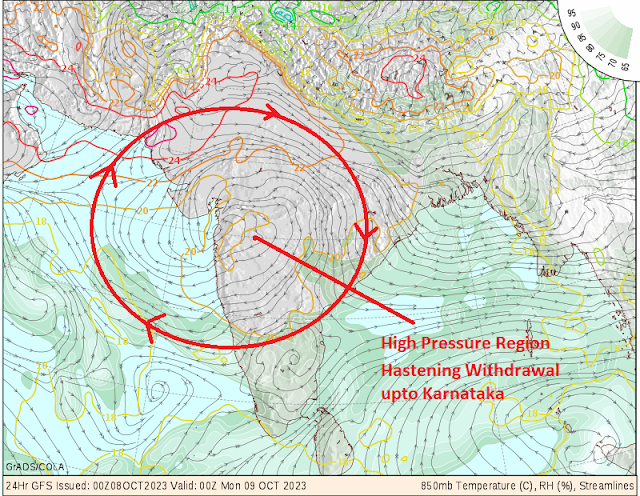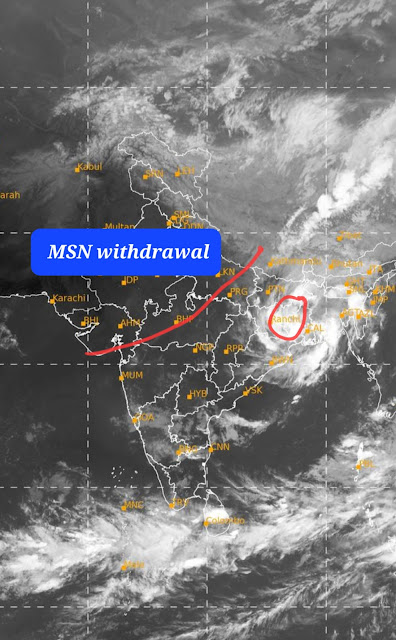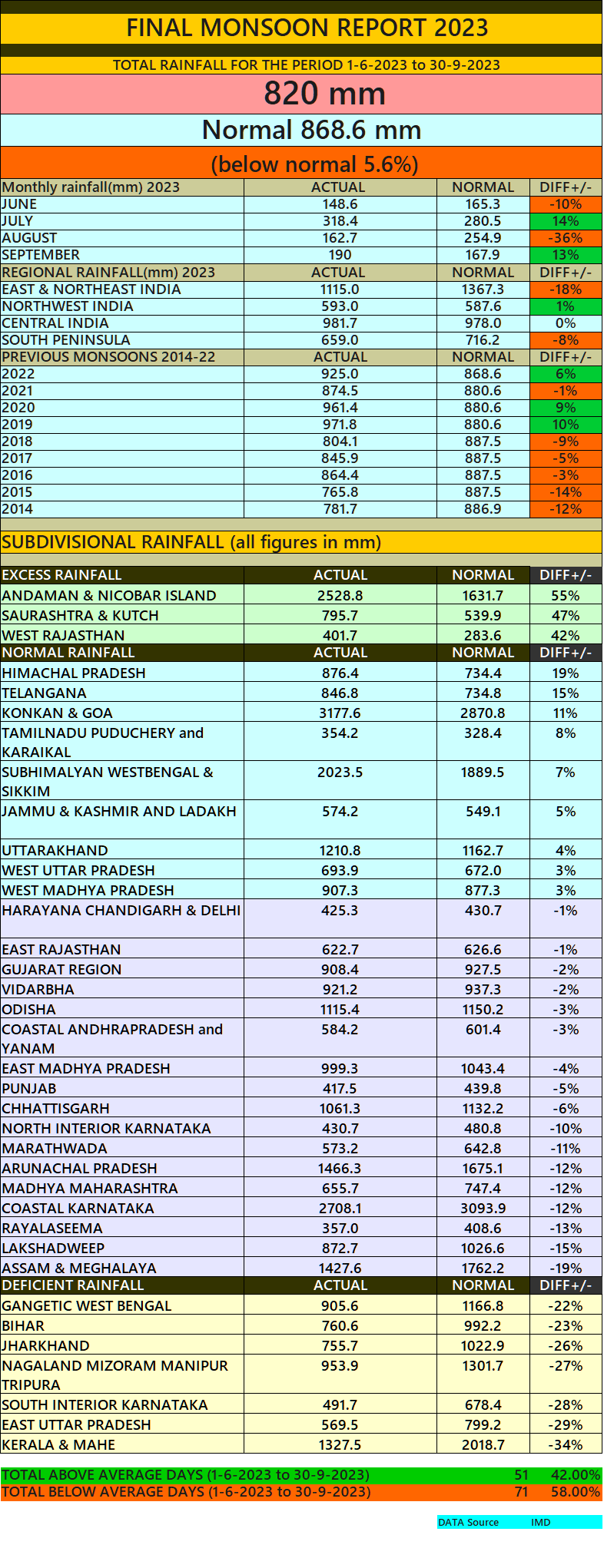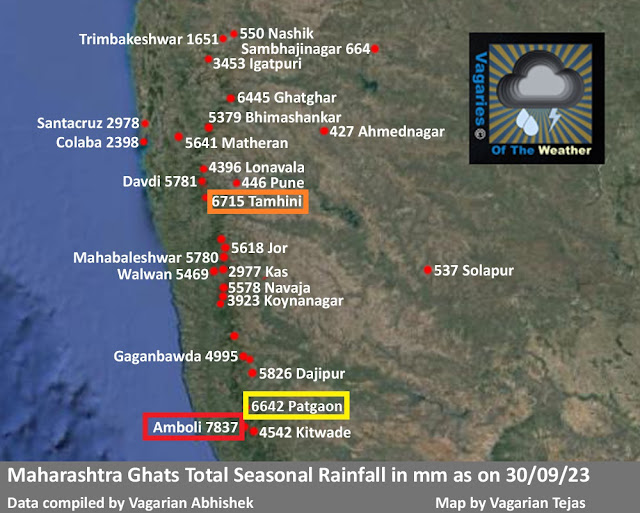Details on the North East Monsoon:
The Northeast Monsoon, also known as the retreating monsoon, is a weather phenomenon that brings rainfall to the southern states of India, particularly the coastal regions of Tamil Nadu, Andhra Pradesh, and parts of Kerala which typically occurs from October to December.
This monsoon is characterized by winds that blow from the northeast, carrying moisture from the Bay of Bengal, and causing rainfall in these regions. It is an important source of water for agriculture in the southern part of India.
SWM onset is well defined, and follows a well coursed out Northward progress. And can be discerned with reasonable accuracy on charts.
For the NEM, it is not so.
In fact, on many occasions, there is no clear indication between the widhrawing SWM and setting NEM. Often one tends to merge into another.
So, setting a date for the commencement of NEM is difficult, and sometimes not possible.
The Northeast Monsoon can give rise to various weather systems and features. Some of the common systems associated with the Northeast Monsoon include:
*The SWM has its origin, its "Power House", is at the Mascrene Highs off Madagascar. The NEM has its origin round a large anti-cyclone over Siberia.
*The Upper winds during the NEM across the Bay are in a clockwise direction.That is an anti-cyclone is formed. At a level of 500 mb, the centre of the anticyclone shifts to central Burma region.
*The Upper Air temperatures show a Northward gradient in the NEM.Near 10N it is normally warmest, and dropping by 8c at 30N.
*Jet streams at 200 hpa are common to both the monsoons.
In the SWM, the Tropical Easterly Jet stream dominates the Peninsula, while the Sub-tropical Westerly Jet Stream is the feature of the NEM.
*The normal Sea Level Pressure during the NEM is a large system of low pressure over the Central Bay. It can extend into the Indian Peninsula as a trough. Towards the end of November, there is a shift southwards of this extended low.
*The general variations and fluctuations in intensity of this low pressure, governs the rainfall. When the trough is well defined, and the low is well marked, rainfall over the southern peninsula is good.
*During the NEM, an occasional burst of cold air from the Siberian High develops a low pressure sysytems over the Equatorial regions of the South China Seas. These systems move slowly westwards thru Sarawak/Eastern Malaysia coast, and remnants of these cross over into the Bay and form depressions.
*Troughs and Convergence Zones**: Troughs and convergence zones can develop along the coast of southern India during the Northeast Monsoon. These areas of low pressure and wind convergence are favorable for sustained rainfall.
*Divergence over the Ocean: As the Northeasterly winds meet the warmer waters of the Bay of Bengal and the Arabian Sea, they can lead to air rising and divergence, which can result in the development of low-pressure areas and weather systems that bring rainfall to these coastal regions.
*Most of the NEM rains depend on depressions and cyclones from the Bay towards the East Coast of India.
Onset of Monsoon**: The onset of the Northeast Monsoon is usually marked by the arrival of the monsoon winds. Meteorological departments monitor wind patterns and rainfall to officially declare the onset of the monsoon season.
The movement of the ITCZ away from the Indian subcontinent during the Northeast Monsoon season is one of the factors that contributes to the dry and cool weather experienced in the southern and southeastern parts of India during this time. As a result, the ITCZ's position is inversely related to the distribution of rainfall in India, with northern regions receiving rainfall during the summer monsoon, and southern regions experiencing drier conditions during the Northeast Monsoon.
The Tibetan High, also known as the Siberian/Tibetan Plateau High, is a significant weather feature in Asia. It plays a role in influencing weather patterns not only during the Northeast Monsoon but throughout the year.
During the Northeast Monsoon season, the Tibetan High often has an indirect impact on the weather in South Asia, including India. Here's how it can be related to the Northeast Monsoon:
1. Wind Flow*: The Tibetan High can influence the wind patterns over the Indian subcontinent. During the Northeast Monsoon, the high-pressure system over the Tibetan Plateau can cause a pressure gradient that results in the flow of cool and dry air from the north/northeast towards the Indian subcontinent. This cool and dry air can interact with the warmer, moist air from the Bay of Bengal, contributing to rainfall in parts of southern India.
2. *Rainfall Patterns**: While the Tibetan High doesn't directly cause rainfall, its influence on the wind patterns can lead to the convergence of air masses over India. This convergence can be a factor in the development of weather systems and precipitation, including the Northeast Monsoon.
The Tibetan High, also known as the Tibetan Plateau High, is a significant weather feature in Asia. It plays a role in influencing weather patterns not only during the Northeast Monsoon but throughout the year.
It's important to note that the Tibetan High is just one of several factors that influence the Northeast Monsoon. Local conditions, such as sea surface temperatures, the presence of low-pressure areas over the Bay of Bengal, and interactions with other weather systems, also play a significant role in determining the behavior and intensity of the Northeast Monsoon in any given year.
During the Northeast Monsoon season, the Tibetan High often has an indirect impact on the weather in South Asia, including India. Here's how it can be related to the Northeast Monsoon.
It's important to note that the behavior and intensity of the Northeast Monsoon can vary from year to year, and meteorological agencies closely monitor these systems to provide accurate weather forecasts and warnings.



.png)
.png)
.png)






















